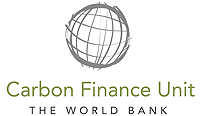Overview
This Clean Development Mechanism (CDM) program of activities has promoted the use of energy-efficient lighting in newly electrified households and buildings in Senegalese rural areas. The utilization of energy-efficient light bulbs such as Compact Fluorescent Light Bulbs (CFLs) and Light-Emitting Diodes (LEDs) instead of Incandescent Light Bulbs (ILBs) has reduced carbon dioxide emissions associated with the combustion of fossil fuels by grid-connected powerplants.
This energy-efficiency Clean Development Mechanism (CDM) program of activities has been undertaken as part of a nation-wide rural electrification plan designed under a concessions scheme. Under such scheme, the country is divided into distinct geographical areas (referred to as concessions). For each concession, an operator (referred to as concessionaire) has been selected through an international competitive bidding process to design, implement and operate the rural electrification.
The Senegalese Rural Electrification Agency (ASER) has acted as the coordinating and managing entity to this Clean Development Mechanism (CDM) program of activities. ASER is an autonomous public entity created in 1998 under Senegal’s Electricity Reform Law 98-29 to provide technical and financial assistance for rural electrification in Senegal.
Each Clean Development Mechanism (CDM) program activity (CPA) has covered one or several concessions and has been implemented with time by concessionaires and/or ASER. Each program activity has been clearly defined by the list of villages and geo-coordinates of the villages included in the CPA. The upfront investment for the purchase of the CFLs and/or LEDs has been financed by ASER either directly or through a subsidy paid to the concessionaires. Revenue from the emission reductions generated under this program have been paid to ASER to recover, over time, the upfront investment costs for the CFLs and LEDs and the costs of managing the program. ASER has shared a minimum of 15% of the Clean Development Mechanism (CDM) revenues with concessionaires as an incentive and for them to cover the monitoring costs incurred for the implementation of the CPA.
Benefits
The introduction of this demand-side energy-efficiency program by ASER has had significant contributions to sustainable development.
- The program uses efficient energy: The program has introduced about 1.5 million CFLs or LEDs which directly reduced the pressure on electricity demand, especially during peak loads and reduces the pressure on investment for additional capacity. This program of activities thus contributed to the economic sustainability of rural electrification in Senegal through a more efficient use of electricity.
- The program has helped make electricity services affordable for households in Senegal rural areas where two thirds of the population are considered to live below the poverty threshold. The use of CFLs and LEDs has reduced electricity consumption compared to ILBs and further reduced electricity usage and costs.
- The program has resulted in technology transfer. The program has promoted high-quality CFLs and LEDs and has resulted in transfer of efficient lighting in rural areas in Senegal. While these technologies are not new in the country, the market has been dominated by low-quality CFLs and uptake by residents has been low to negligible. In rural areas, the low or non-availability of CFLs through traditional distribution channels has been limiting the uptake.
- Environmental sustainability: This demand-side energy efficiency program promoted by ASER has generated GHG emission reductions and has contributed to Senegal’s participation in the international efforts for climate change mitigation.
At the national level, this program has helped develop awareness on energy efficiency and environmentally-responsible behaviors in rural communities. Regular communication and awareness campaigns have also taken place during the lifetime of this program of activities.
The monitoring of the program, including measures for recycling of CFLs and LEDs, has also involved the development of specific functions and skills within ASER and the concessionaires’ teams. This has led to a better awareness and treatment of environmental issues internally by their staff and has contributed to the dissemination of good environmental practices in rural areas during program implementation.
